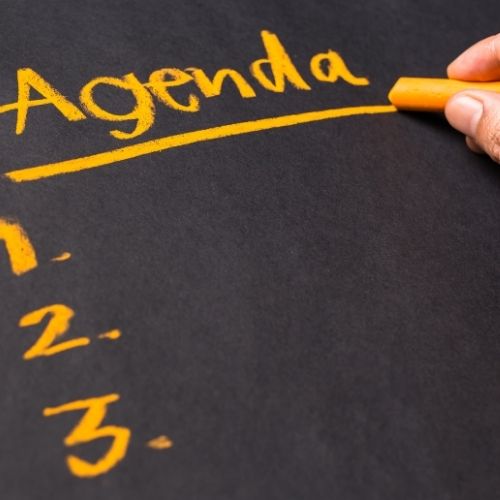I think you’ll agree that leading a group discussion can be very overwhelming. With the right plan, you can easily have a flowing discussion that will be both informational and beneficial for the group and you. In this article, we will be going over advice and tips on how to lead a group discussion.
You, as a discussion leader, control how well the discussion goes. It’s up to you to keep the discussion moving and get everyone involved. You are charged with ensuring the discussion stays on course and does not get out of control.
I don’t say this to scare you because it’s something you are very capable of doing. Continue reading for group discussion tips to make your meeting a huge success.
Steps for Leading an Effective Group Discussion
Leading a group discussion can be a daunting task, but can also be very rewarding. Here are a few ideas consider that could help make the process smooth and successful:
- Set the tone and objectives: Establish the purpose, expectations, and guidelines for the discussion before beginning.
- Prepare the materials and activities: Ensure everyone has the materials they need and consider adding activities or discussion prompts to help the conversation flow.
- Establish roles: Assign roles to each person in the group such as a facilitator, note-taker, or timekeeper.
- Foster an open and constructive dialogue: Encourage well-thought-out discussion points and actively listen to each person’s contribution.
- Encourage collaboration: Ask for input from everyone in the group, and don’t be afraid to pause the conversation to allow for reflection and digesting of ideas.
- Find common ground: As the discussion progresses, help the group find common ground and agreement.
- Summarize and document the discussion: Make sure to summarize the discussion and document any decisions that were made.
These are just a few ideas to consider when leading a group discussion. By following these steps, you can ensure that the discussion is engaging, meaningful, and successful.

Sample Group Discussion Topics
- Current events like racial injustice.
- Work problems or roadblocks and how to fix them.
- Is the cost of a college education justified?
- Politics (although this one may not be appropriate for certain settings like the workplace)
- Leadership development strategies.
- What is the impact of social media on our lives?
- Should marijuana be legal in the United States?
- What skills are most important for a good employee?
- What qualities do you want to see in a good boss?
Click the link for more professional group discussion topics.
What Should Be Avoided in a Group Discussion?
In a group discussion, it is important to avoid certain topics that can be controversial or sensitive. These topics include:
- Politics: Political discussions can quickly become heated and divisive, leading to arguments and hurt feelings. It is best to avoid discussing politics in a group setting to prevent any potential conflicts.
- Religion: Similar to politics, religious discussions can be very personal and sensitive. It is best to avoid discussing religion in a group setting to prevent any potential conflicts and to respect everyone’s beliefs and values.
- Personal attacks or gossip: It is important to maintain a respectful and professional tone in a group discussion. Personal attacks or gossip about individuals can be hurtful and disruptive to the group dynamic.
- Controversial social issues: Topics such as abortion, LGBTQ+ rights, and gun control can be highly controversial and may lead to arguments and tension within a group. It is best to avoid these topics in a group setting to prevent any potential conflicts and to respect everyone’s opinions and beliefs.
Overall, creating a safe and respectful environment in a group discussion is important. By avoiding these sensitive topics, you can ensure that everyone feels comfortable and that the discussion remains productive and constructive.
Tips and Best Practices on How to Lead a Group Discussion

Tip #1: Use Your Discussion Goals to Guide You
What are you trying to get out of the discussion? Are you trying to learn about other people’s views? Are you trying to get information across to the group? Is it more of an idea-creation or problem-solving session?
These questions will help guide how you conduct your meeting. These goals need to also be explained to all the individuals involved before beginning the discussion. Understanding your goals for the discussion is vital in keeping the discussion relevant and not having the discussion go way off track.
Tip #2: Plan Your Topics for a Productive Discussion

Now that you know your goals, think about what topics you want to talk about in dealing with those goals. This is not a script for the group conversation but more of an outline. The outline should be simple bullet points to help with the flow of the meeting.
Tip #3: Invite the Right People to Get the Best Benefits
Inviting people who shouldn’t be there may lead to people being uninterested and can hurt the atmosphere of the discussion. Not inviting people who should have been invited will lead to a lot of information and ideas being missed that these missing people would have provided.
There is a fine line between having too many people and not enough people. Think about your goals and use those to produce your list of participants.
Tip #4: Send an Agenda so Members can Prepare

To get the most participation from the group send them an agenda before the meeting begins. Allow the members to come up with ideas and formulate some opinions about the discussion topics. If you don’t want to send out a complete agenda at least let them know the main topic you’re planning on discussing.
Tip #5: Choose the Right Type of Environment for the Group Members and the Discussion
The wrong type of environment can ruin a group discussion. You should try to utilize a place with good lighting, and good acoustics so people can hear each other, and try to make it big enough to fit everyone comfortably but not too big where everyone is spread out.
Also, try to make sure your meeting area is open and ready to go before your scheduled meeting because people may get frustrated having to wait. This means if you have any slides or presentations make sure they are ready when people arrive. Don’t make them wait for you to get stuff ready.
Tip #6: Set Ground Rules to Maintain Order
Ground rules are very important in having a productive meeting. After thanking everybody for coming and explaining the topics, let everyone know what you expect. Make sure you brief that everyone should be respectful of others and that rudeness will not be tolerated.
If you want it to be an open forum, that’s great but ensure you explain that people should wait their turn to talk and allow others to speak their voices.
See Related: Brian Tracy Leadership Questionnaire
Tip #7: Get it Going with the Right Conversation Starters
After you set the ground rules, start the conversation by trying to get everyone involved right off the bat. If people in the group are not familiar with each other you should start with introductions. Let each member introduce themselves and describe a little bit of their background. Where they work, went to school, what they enjoy doing in their off time, etc.
If members of the group are familiar with each other you can go around the room and ask each member a question. It can be something like will you tell us something about yourself that not many people know or How do you like to spend your Sundays? Some may be a little embarrassed to talk in front of the group but forcing everyone to talk helps get those jitters out of the way and starts the conversation with everyone’s input.
Tip #8: Ask Open-Ended Questions for Good Discussion
Avoid direct questions as much as possible. Direct questions are questions like Did you eat lunch today or do you agree with the topic?
These are questions that can be answered with one to two-word responses like yes or no. Too many of these types of questions can begin to feel like an interview or interrogation.
On the other hand, open-ended discussion questions advance the conversation. They are questions like how does this make you feel or why do you think this direction is the way to go? These types of questions typically require a more in-depth response.
Tip #9: Everything is a Question to Keep the Discussion Lively

As the leader of the group, there will be many times that people turn to you with questions. Instead of directly answering the question, it’s a great opportunity to redirect the question to the group. You should control the conversation but not take over the conversation.
Redirecting questions asked to you gives the group more opportunity to speak up and further the conversation on their own.
Tip #10: Be the Facilitator and Moderator to Keep the Discussion Going
As the conversation progresses you will have the best results by facilitating and moderating the conversation. After the introductions, your job becomes directing the conversation. As the moderator, you need to keep order by ensuring people are not being rude and allowing others to have a chance to speak.
As the facilitator, you want to make sure the conversation keeps moving and stays on topic. There will be many times when the conversation naturally leads off in an unintended direction.
These may even be ideas worth exploring but not right for the intended group discussion. In these cases, you can use what’s called the parking lot technique. It’s where you tell the group that we are going to move on from this topic but would like to come back to it at a later time to discuss more.
Other times the group may begin going down rabbit trails and discussing ideas that don’t pertain to the intended discussion. In these instances, it’s your job as the moderator to real them back in to get them back on topic.
This can be done by letting them know they are getting off-topic a little and asking a question about the current topic you are on or even moving to the next topic.
See Related: Group Facilitation Techniques To Supercharge Your Discussions
Tip #11: Give Everyone a Chance to Speak to Keep All Members Involved
Many times there will be people who don’t say very much. They may be introverted, they may not have much to say on the topic, or they could be looking for an opportunity to speak up but others may be hogging the conversation.
Spot these people and make it a point to ask their opinion on the subject. If the people hogging the conversation try to interject, politely redirect back to the person that hasn’t said much.
It’s good to show that you value everyone’s opinion and they will be more apt to speak up later in the conversation.
Tip #12: Keep Your Input to a Minimum
It’s ok to have input in the group discussion but try to maximize the input from others. Sometimes people will be afraid to go against what the leader says and may just agree with what you say.
When you do give input try to summarize, recap, or clarify what others are saying. Remember you are not giving a briefing and instead, having a discussion.
Tip #13: Observe Body Language in Group Discussions
When participating in a group discussion, watching for non-verbal cues can be as fascinating as the dialogue itself. Body language often speaks volumes about a person’s interest, engagement, and enjoyment level. By observing these subtle signals, you can gauge the temperature of the room and adjust the conversation flow to ensure a lively and inclusive experience for all involved.
Signs of Enjoyment and Engagement
When participants are enjoying a conversation, their body language tends to be open and animated. Look for these positive signals of engagement:
- Facial Expressions: Smiles, laughter, and nods express agreement and enjoyment. If participants’ eyes light up and they have an overall ‘eager’ expression, they’re likely enjoying the discussion.
- Posture: Leaning in towards the speaker indicates interest. An upright position suggests active participation and attentiveness.
- Gestures: Enthusiastic hand movements and affirming head nods during a conversation often reflect a person’s investment and engagement in the topic at hand.
- Eye Contact: When people make direct eye contact, it suggests they are confident in their contribution and interested in others’ reactions.
- Mirroring: Subtly mimicking the gestures or posture of others in the group is a sign of rapport and can indicate that participants are on the same wavelength.
Signs of Disinterest or Discomfort
Conversely, certain body language cues can indicate that a participant is not particularly interested or is disengaged from the group discussion:
- Facial Expressions: Boredom can be read on a person’s face when they frown, yawn, or have a glazed expression. Rolling eyes might also signal disagreement or impatience.
- Posture: Slouching, leaning back, or turning away from the speaker can suggest disinterest or detachment from the conversation.
- Crossed Arms and Legs: These closed positions might indicate a person’s discomfort or a defensive stance toward the discussion’s content.
- Lack of Eye Contact: Avoiding eye contact might mean a participant is feeling disconnected or unwilling to engage in the topic.
- Distractions: Looking at a watch, fiddling with objects, or checking mobile devices are clear indications of a lack of interest.
Adjusting the Dynamic
As an active member or facilitator of a group discussion, noticing these cues can help you steer the dialogue to maintain engagement. If you detect signs of boredom or discomfort, consider the following actions:
- Address everyone: Pose open-ended questions to the group to encourage broader participation. This can energize the conversation and bring quieter members into the fold.
- Change the subject: If a topic is not resonating, introduce a new angle or a different topic that might be more stimulating for the group.
- Encourage sharing: Invite participants who have not spoken up to share their thoughts, making sure to create a welcoming environment for diverse opinions.
- Take a break: If the energy is waning, suggest a short break. A moment of rest can refresh the group and lead to renewed interest.
- Utilize humor: A well-timed joke or a light-hearted comment can alleviate tension and bring smiles to a room, fostering a more congenial atmosphere.
In essence, a perceptive leader can discern much from body language and use that knowledge to animate and enrich a group discussion, ensuring that it is not only productive but also enjoyable for all participants.
Tip #14: End the Discussion on a Positive Note to Keep Spirits High
You should always try to end these discussions on a positive note. Explain to everyone how you got some precious information and thank them for giving up their valuable time to participate.
Even if it was a mandatory discussion, you should thank them for coming. This will make them more likely to participate in future discussions. Ending on the wrong note will leave people feeling like they wasted their time and participation in future discussions will suffer.

Dealing with Disruptive Participants
Dealing with difficult or disruptive participants is an important aspect of leading a successful group discussion. While it can be challenging to manage disruptive behavior, it’s important to do so respectfully and constructively to prevent the discussion from being derailed by one person’s negativity.
One effective strategy for addressing disruptive behavior is to address the behavior itself, rather than the person. For example, instead of saying “You’re being disruptive”, try saying “I’m having trouble hearing other people’s perspectives because there is a lot of cross-talk happening. Can we try to give everyone a chance to speak?”
It’s also important to be specific about the behavior that is causing the disruption. For example, if someone is constantly interrupting others, you might say “I’m noticing that you’re interrupting other people frequently. Can you please try to wait until someone has finished speaking before chiming in?”
When addressing disruptive behavior, it’s important to remain calm and neutral in your tone. Avoid becoming defensive or confrontational, as this can escalate the situation and make it more difficult to resolve.
If the disruptive behavior continues, it may be necessary to take more assertive action, such as asking the person to leave the discussion or seeking support from a manager or supervisor.
Overall, addressing disruptive behavior respectfully and constructively is essential for maintaining a productive and positive group discussion. By setting clear expectations and boundaries for behavior, and addressing disruptive behavior calmly and neutrally, you can help ensure that everyone has a chance to participate and contribute to the discussion.
Evaluating the Success of a Discussion
Evaluating the success of a group discussion is an important step toward ensuring that the group continues to learn and grow together. Soliciting feedback from participants and reflecting on what worked well and what could be improved for future discussions can help identify areas for growth and improvement, and ensure that future discussions are even more productive and meaningful.
One effective way to solicit feedback from participants is to ask open-ended questions that encourage reflection and discussion. For example, you might ask questions such as “What did you find most valuable about this discussion?”, “What could have been improved?”, or “What topics would you like to explore more in-depth in future discussions?”
It’s important to create a safe and open environment for feedback, where participants feel comfortable sharing their thoughts and opinions. This can be achieved by emphasizing that all feedback is valuable and that the goal is to improve the discussion process for everyone.
Once feedback has been collected, it’s important to reflect on what worked well and what could be improved for future discussions. This might involve reviewing the discussion objectives, identifying areas where more preparation or research is needed, or exploring new formats or activities to keep the discussion engaging and dynamic.
By soliciting feedback and reflecting on what worked well and what could be improved for future discussions, the group can continue to learn and grow together. This ongoing process of reflection and improvement can help ensure that the group remains engaged and invested in the discussion process and that everyone has an opportunity to contribute to the group’s ongoing growth and development.
Ways to Further Practice Your Discussion Skills
If you want to improve your group discussion skills, seeking out opportunities to practice is key. Here are some ways you can find group discussions to participate in:
- Join a club or organization: Many clubs and organizations hold regular meetings where members can discuss various topics. Joining one of these groups can allow you to practice your group discussion skills in a supportive environment.
- Attend community events: Look for community events that include group discussions or panels. These events can be a great way to meet new people and practice your skills in a more casual setting.
- Take a class: Many classes, such as public speaking or debate courses, include group discussions as part of the curriculum. Taking a class can allow you to practice your skills in a structured and supportive environment.
- Attend networking events: Networking events often include group discussions or panels where participants can share their perspectives and experiences. Attending these events can help you build your skills and make valuable connections.
- Participate in online forums: Online forums and discussion boards can be a great way to practice your group discussion skills from the comfort of your own home. Look for forums related to your interests and start participating in discussions.
Remember, the key to improving your group discussion skills is practice. By seeking out opportunities to participate in group discussions, you can build your skills and become a more effective and confident communicator.
Wrapping Up Group Discussion Tips
Group discussions may seem intimidating at first but using these tips they almost run themselves. The biggest part is to try your best to be comfortable and let the conversation flow.
With good preparation and a level head, you will easily lead a great conversation and everyone will leave more enlightened than before the meeting.
I hope this post helped you with leading a successful and purposeful group discussion.
Did you enjoy this article on how to lead a group discussion? Please don’t forget to share and subscribe using the buttons below.



I really like this article. Very useful information.
This is an excellent guide! It thoroughly addresses many sub-topics without being overlong. Thank you for creating it.
Very nice post. I absolutely love this website. Keep writing!
Thank you for the kind words.
Excellent post. I was checking constantly this blog and I am inspired! Very useful info specially the last part 🙂 I care for such information a lot. I used to be seeking this particular info for a very long time. Thank you and good luck.